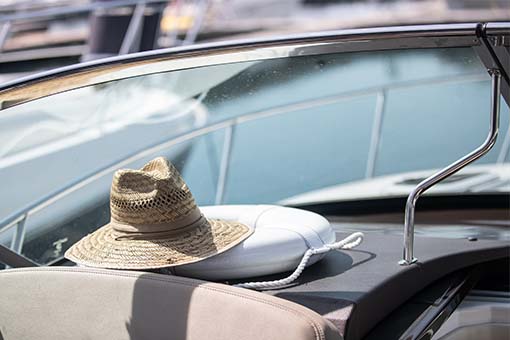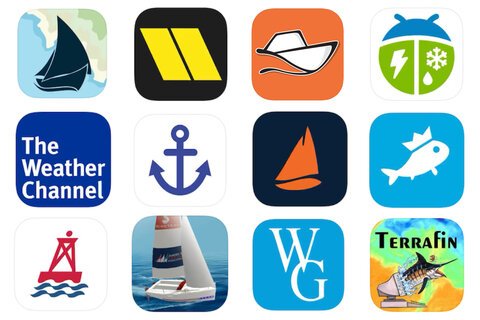Safe boating starts before you leave the dock. Be sure your boat is equipped with the gear you need to ensure the safety of everyone on board.
So, you have a new boat (or a boat new to you) and you’re wondering what gear you need aboard—both for emergencies and to be legal. U.S. Coast Guard equipment requirements vary by the size of your vessel, how many people you have aboard and where you boat. The safety gear required by the U.S. Coast Guard is a minimum—there are additional items you may want to include to supplement the required equipment.
Learn More: Boat Safety Checklist & Safety Equipment
Here are the boat size breakdowns:
- less than 16 feet
- 16–26 feet
- 26–39.4 feet
- 40–65 feet
- 65 feet and larger.
The rules are specific to each segment and you can find a handy chart at the U.S. Power squadron site here.
- All recreational vessels must carry one USCG-approved lifejacket (Type I, II, III or V) for each person aboard and that includes specifically fitted personal floatation devices (PFDs) for children. All kids 12 and younger must wear a PFD on a moving vessel. Other than human powered vessels like canoes and kayaks, all boats larger than 16 feet must also have a Type IV throwable device to toss to anyone who is in the water to provide them with a first-line floatation device. Life jacket fit, style and use are all important factors to consider as well.
Learn More: How to Choose the Right Life Jacket
- Moving on, a B-I type extinguisher must be aboard for motorized boats up to 26 feet. For larger vessels, there’s a mandatory number and combination of B-I or B-II type extinguishers in serviceable condition (not expired) required. For outboard-powered boats larger than 26 feet (such as dinghies), no extinguishers are required nor are they specified for non-motorized boats.
- Visual distress signals (such as flares for nighttime or daytime operation) must be carried by boats larger than 16 feet. A minimum of three day-use and three night-use pyrotechnic devices must be aboard in various combinations.
- Sound-producing devices (bell, horn whistle) are recommended but not required on boats less than 40 feet, but you must have some way to make an audible sound so your location is announced at nighttime, or in haze, heavy rain or fog.
- Navigation light requirements are numerous and specific to the vessel. When moving, you’ll need red and green running lights as well as a white stern light. Boats under sail have different light requirements than those under power. Boats less than 20 feet require only a 360-degree white light to shine in times of limited visibility. An all-around white light that is visible for a minimum of two nautical miles is also necessary when anchored.
- Pollution regulations vary too. Boats less than 26 feet are on the honor system with no specific plaque needed. Boats larger than 26 feet must carry oil discharge and trash disposal placards placed in a visible area onboard.
- If you are piloting a boat that’s less than 40 feet you should know the boating “Rules of the Road” that cover vessel meeting, overtaking, and crossing right-of-way situations. In addition, boats larger than 40 feet must carry a copy of the USCG Rules booklet that outlines all specifics.
- There are other rules around engine compartment ventilation and head (toilet) management. It’s also recommended (not required) that you carry and anchor and line (in case you’re adrift while awaiting assistance), a handheld bilge pump or de-watering device, a paddle in case the engine fails and a way to call for help (a cell phone or VHF radio).
USCG rules are many and quite intricate so find a good go-to chart and then equip your boat with the required items as well as supplementary gear that may help keep you safer on the water. As state requirements may go beyond the Coast Guard requirements, you should also check with your state’s boating office for state rules.
Read Next: Complete Boating Safety Guide - Staying Safe on the Water


